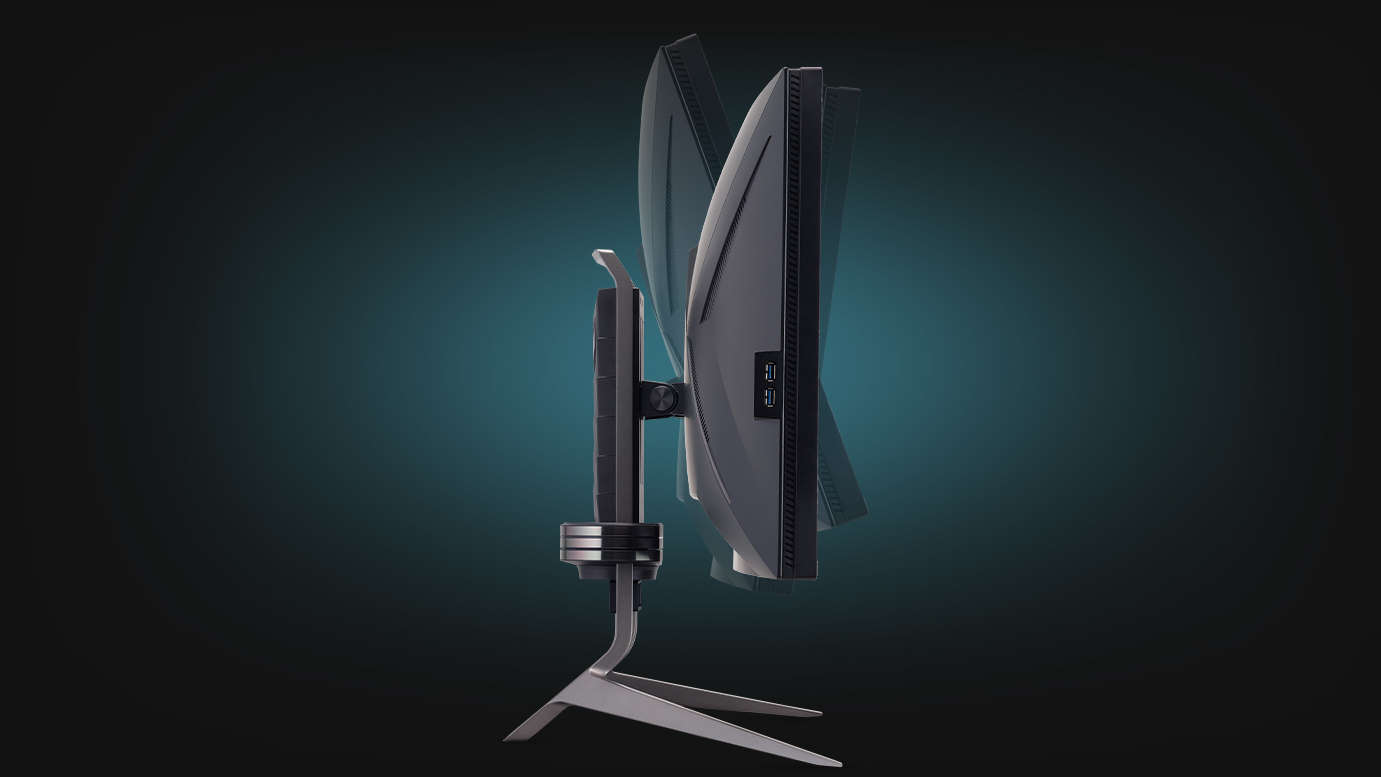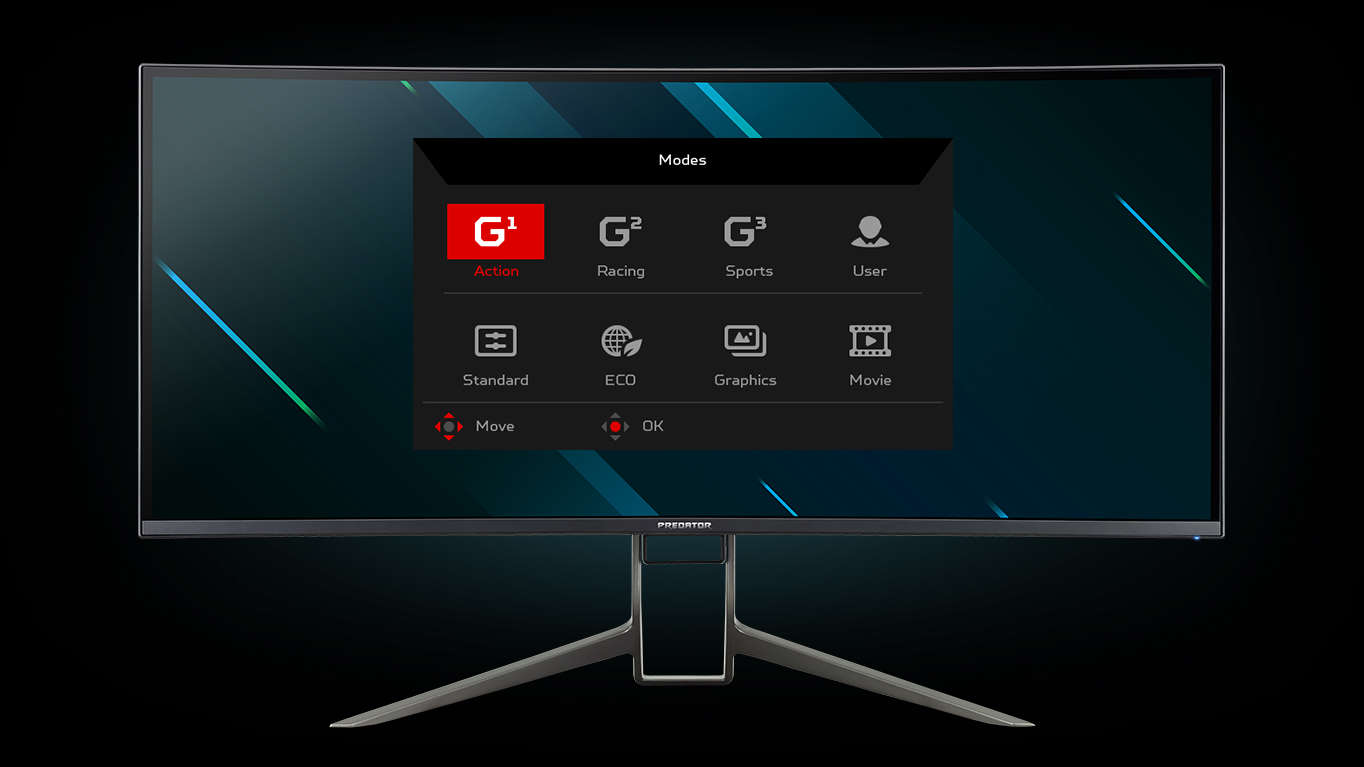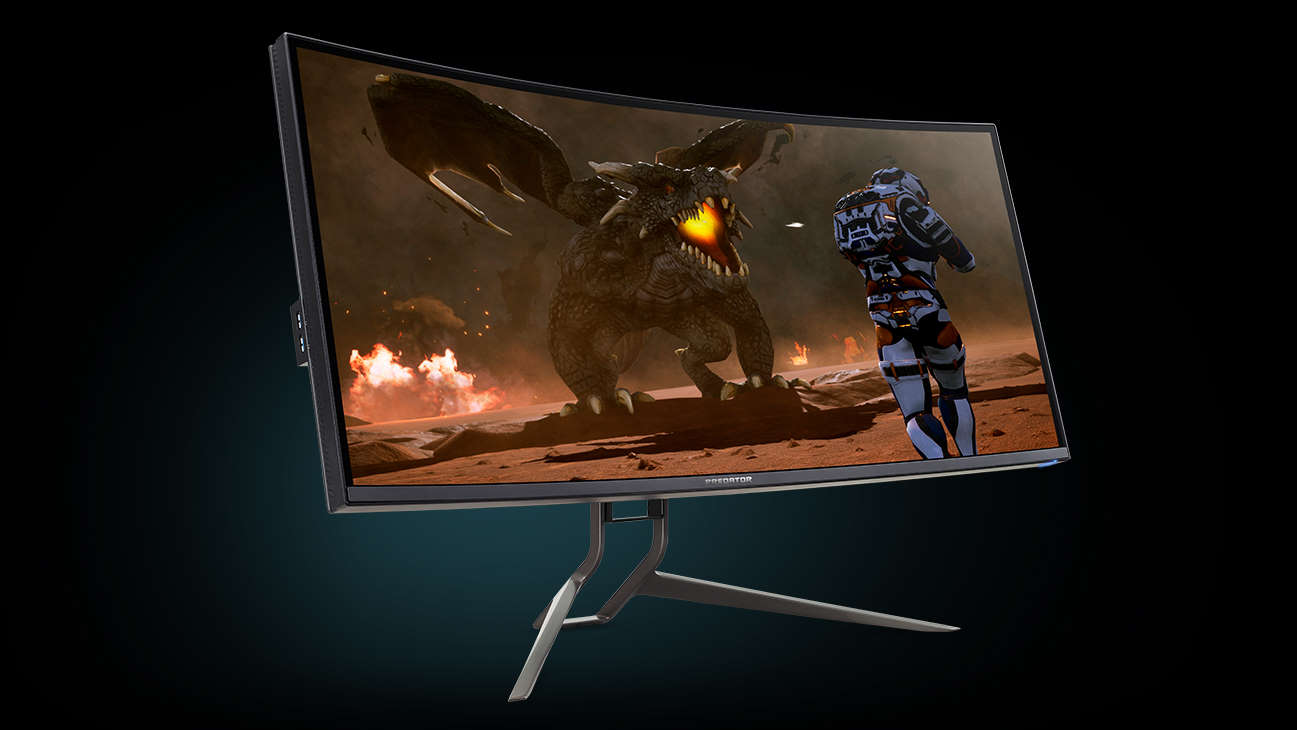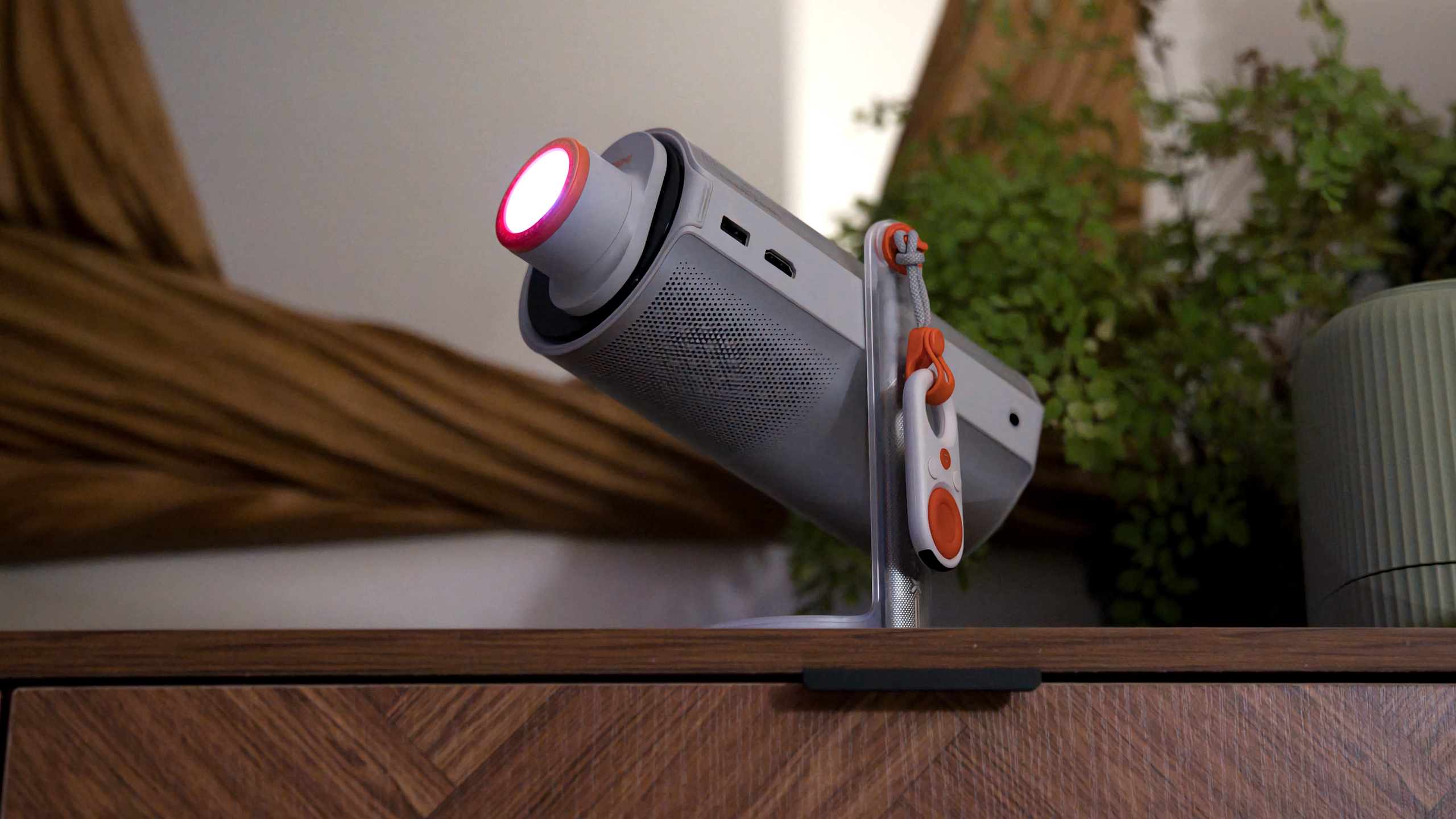Our Verdict
Everything desirable in a super-high-end monitor packed in together, the Acer Predator X38 is a dream come true and the 1600 vertical res. is what we’ve been waiting for especially.
For
- Expansive resolution
- Quality, responsive IPS panel
- 175Hz G-Sync-y refresh
Against
- Weak HDR
- All the monies
PC Gamer's got your back
The Acer Predator X38 is without doubt a contender for best gaming monitor right now, because it ticks a lot of boxes. It’s enormous, at 37.5-inches in a glorious 21:9 aspect ratio, and with a 3840 x 1600 resolution. It’s curved, though only a little with a relatively relaxed 2300R bend. But that's still enough to have each edge come in at you just enough to make taking it all in quite natural. The panel is IPS, which is what you want for luscious colours, and Acer has overcome the big IPS downside of typically high response times. This beast has a 1ms GtG response, which is truly IPS coming of age and doing it all without the compromises of old.
Screen size - 37.5-inch
Panel technology - IPS
Native resolution - 3840 x 1600
Refresh rate - 144Hz (175Hz overclocked)
Aspect ratio - 21:9
Response time - 1ms GtG
Connections - 1x HDMI, 1x DisplayPort 1.4
The Predator X38 also sports the G-Sync hardware module, and also DisplayHDR 400 certification. All this rips along at a stock refresh of 144Hz, which can be cranked up to 175Hz. There is almost nothing on the technology tree that this monitor doesn’t sport. Which is why it is also expensive, at $2,400 (AU$3,198).
Luckily first impressions are very good, thanks to an unusually pleasant unboxing and setting up process. It’s surprisingly light for a monster this size at just 9.48kg – and that includes the big metal stand, which comes pre-fitted, another setup nicety.
Monitor cable connecting is usually a minor fiddle, with difficult to reach and see recessed ports, but the Predator X38 tilts back a full 35 degrees, exposing its display and power ports underneath for effortless, no-fumble plugging in. Once settled, the screen raises, lowers, and rotates—and of course tilts to a generous degree—far more than most. The extra rotation means you can position the stands at an angle to keep one of the legs from interfering with your mouse pad, and just rotate the screen back to face you. Nice. The screen also raises or lowers 13cm, which, again, is very generous.
I did find that when using the HDMI port, any movement of the monitor would cause the screen to flicker or momentarily go dark – a dodgy port, no doubt, and hopefully particular to just my review unit. The DisplayPort connection, however, is fine.

Best gaming monitor: pixel-perfect panels for your PC
Best 4K monitor for gaming: when only high-res will do
Best 4K TV for gaming: big-screen 4K PC gaming
No matter what you’re coming from the 37.5-inch display is just mammoth. It simply isn’t possible to take it all in without moving your head slightly. That means immersion, of the maximum variety. The skinny little bezels are just 2mm wide and blend into invisibility in use.
UI controls are around the back and work well enough. Switching between inputs does take a frustratingly long time, and adjusting the brightness is trickier than it needs to be, but it’s generally well laid out and accessible.
Keep up to date with the most important stories and the best deals, as picked by the PC Gamer team.
As a general productivity monitor this thing is a dream. The size obviously makes things possible you just can’t do on anything smaller. It can fit four A4-sized windows side by side. FOUR! Or, Satan’s own spreadsheet filling up the entire expanse. I’ve been using it during the day for desktop graphic design while also writing and emailing, and have ample room to spare. Text shows up crisply with no jaggies or bleed, and it’s very unusual to have a large-screen gaming monitor achieve that.
A proprietary blue light mode reduces eye strain, too, and it works very well, at least as good as a Microsoft Surface screen. And I think that's the best in the biz for good blue light reduction. Colour accuracy is also very good, at 98% DCI-P3. You can also select how the LED backlights operate, with Desktop, Gaming and Hybrid modes. In practice, however, I saw no discernable difference while gaming, and generally left it on Desktop mode unless in a fast-paced FPS game.

But this thing wasn’t built for word processing. In games there simply isn’t anything better. It is a gaming dream where the many technologies that you might see one or two of in a monitor all come together, leaving you wanting for almost nothing more.
The ultrawide aspect ratio makes it extremely well suited to driving games, and while it might not have the extreme width of something like the 49-inch Samsung CRG9, its 1600 vertical res is debatably more useful than the maximum 1440 of that Samsung model, or paltry 1080 of its still-popular 49-inch predecessors. Indeed, it’s the 1600 vertical res that makes this really shine as a gaming screen – every ultrawide monitor we’ve reviewed so far is lacking in that department and having as much tall as you do wide really opens things up both viscerally, and for better usability.
FPS gaming is an immersive wonder. In Doom Eternal the experience was almost overwhelming, and seeing the colours of this IPS in such a sumptuous environment was an eye candy deluxe thrill. It doesn’t quite dazzle like a Quantum Dot screen, again Samsung does slightly better with that technology across its recent gaming screens, but there’s little to complain about. At HDR 400, it’s good enough to deliver what you want in HDR effects, but it’s not dazzling like the HDR 1000 screens you can now buy, like the Asus PG43UQ.
Banding was pretty much non-existent and the backlighting was even, though with a faintly noticeable glow coming from the edges in dark scenes, but nothing to be troubled about and not noticeable at all while gaming.
Pushing the overclock to 175Hz yielded a perfect result with no ghosting visible. Small details like text were rock solid, too, with no shimmering. At such a huge resolution your graphics card will obviously be taxed in many games, and for me while testing this I generally left it at 144Hz, though for several days I used it on 175Hz for everything – including boring work, and it was rock solid and crisp all the time.



There’s little more you could wish for with the Acer Predator X38. We’ve been waiting a long time for a monitor that actually had a useable vertical resolution to match the ultrawide width. Until now, if you wanted wide you had to settle for short. Now it’s all come together, and with a grab bag of the best in screen tech to boot.
In fact we've actually been waiting a long time for this exact monitor. Revealed back at CES in January, and originally set for a spring release, the Predator X38 is only now getting close to retail availability.
Yes, the HDR rating could be higher, but it’s a small compromise in the face of all the gains elsewhere. Best of all it’s the first of its type that’s truly usable for eight hours a day doing work. Again, that extra couple of hundred vertical pixels makes a huge difference for that. Acer’s done very well putting this together. It’s not cheap, but that’s hardly surprising considering the package you get.
Everything desirable in a super-high-end monitor packed in together, the Acer Predator X38 is a dream come true and the 1600 vertical res. is what we’ve been waiting for especially.
Ben thinks he’s probably the most experienced PC gaming editor and writer in Australia. After working on the legendary Hyper magazine in the early 1990s, he founded the even-more-legendary PC PowerPlay mag in 1995, and remained as editor for the first five years during that period of explosive PC gaming evolution. After that he founded Atomic magazine in 2000, shifting his focus a bit more towards PC gaming hardware. After a few years as Atomic editor, Ben took over PC Authority magazine, and is now the editor of APC. He likes 48-hour Sins of a Solar Empire binges when he’s not sitting in his sim racing rig manhandling his precious German equipment.


